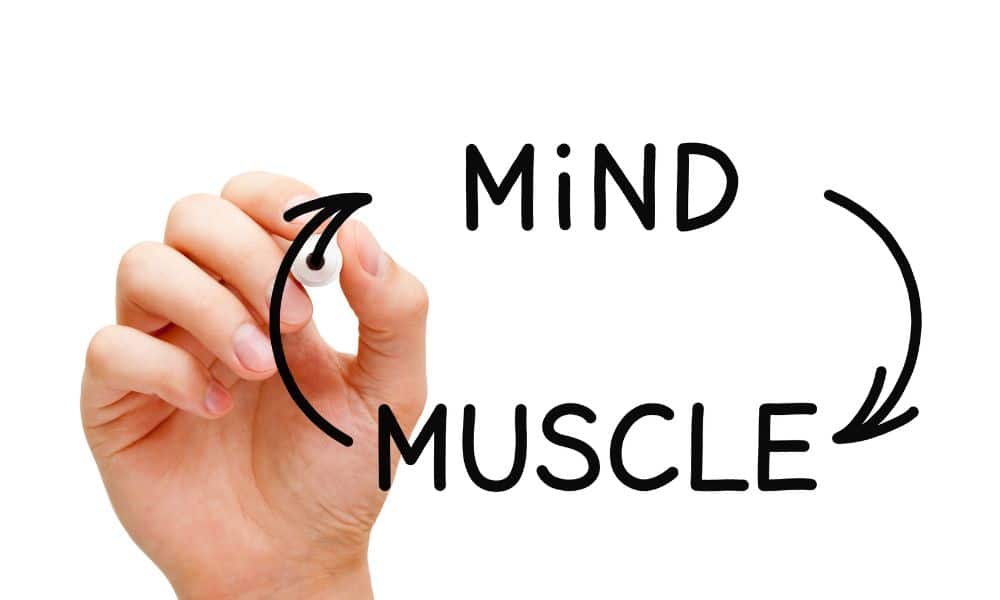Do you know what the mind-muscle connection is? Contrary to popular belief, muscle size does not always correlate with muscle strength. Stronger athletes will have bigger muscles, but this does not always hold. And perhaps the best example of this is by looking at Bruce Lee, who had relatively thin arms but could perform some incredible feats. How? it comes down to the mind-muscle connection. The ability to will your muscles into action.

How the Mind Controls the Muscles
You start by generating a signal in your brain to move any muscle. Specifically, this signal will begin life in the motor cortex. This part of the brain comprises a one-to-one mapping between body areas, controls movement, and handles feedback from touch.
So the signal originates here, then travels through the body, following the central nervous system. Eventually, it reaches the ‘neuro-muscular junction’ where the signal jumps across to engage muscle fibers. The strength of this signal is partly responsible for how many muscle fibers fire at once and for which fibers are in the particular fire.
This is your mind-muscle connection. Because the stronger the signal you’re able to send, the more power you’ll be able to generate from the same amount of muscle. And here’s the thing: you are probably engaging only around 20-40% of your muscle fiber at once. So that means you have at least 60% of your strength that you can’t tap into. Want proof? Then consider what happens when someone gets electrocuted and thrown across the room: they fly not because of the energy force but because their muscles completely contract!

How to Strengthen the Mind-Muscle Connection
So how do you strengthen this connection? A straightforward strategy is to train the connection by using it more. One of the granddaddy principles supports using a muscle more to train it. That means lifting 100% of your 1RM, pulling against an immovable force (called ‘overcoming isometrics’), and concentrating more on your muscles as you use them.
On top of this, you can also train harder by increasing your production of excitatory neurotransmitters like dopamine, adrenaline, and acetylcholine. Studies show that you can do this even by just shouting–when we shout, it causes us to release hormones that help us tap into more of our potential and lift even heavier weights!
The bottom line on Mind-Muscle Connection
Start thinking beyond your muscle-skeletal system to get more out of your workout. You also use your nervous system and brain to move weights. Make sure you don’t overload or stress your nervous system or brain. The stronger your nervous system and the more control your brain has over your muscles, the bigger you get and the more weights you lift. Also, a stressed brain creates more cortisol, adversely affecting muscle size.
Thus, when you train, concentrate on each lift and use rest days to give your nervous systems a chance to recover from your workouts. Muscles can rest as you work on different muscle groups, but your nervous system must control your muscles during every exercise. A workout places stress on the body while resting, and recovery gives your body a chance to repair, recover, and GROW!




